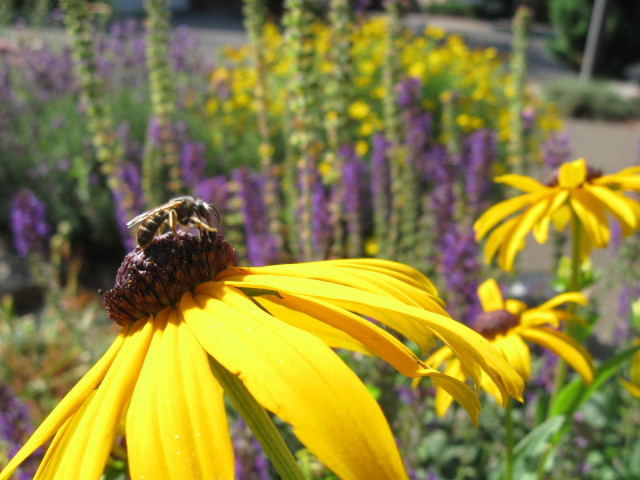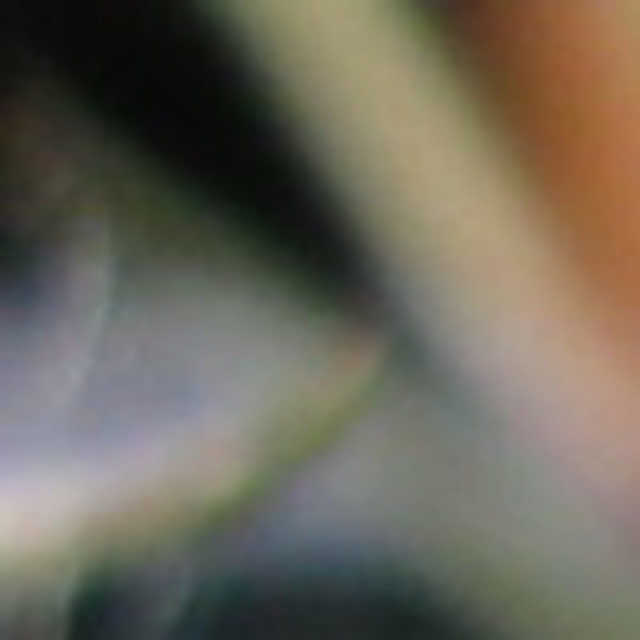Three Ways To Help Pollinators in Your Garden

Sweat bee (Halictus ) nectaring on black-eyed Susan (Rudbeckia ), with Salvia , tickseed (Coreopsis ), and English lavender ‘Hidcote’ (all excellent nectar sources) in background. Photo courtesy of Matthew Shepherd, Xerces Society.
This week – June 18-June 24, 2012 – is National Pollinator Week and the Xerces Society and other organizations devoted to the preservation of insects are busy spreading the word about pollinator conservation.
Why should we care? Here’s the short version: pollinating insects – the bees, butterflies and other fluttering or buzzing creatures that pollinate seed-bearing plants and make honey – are disappearing at an alarming rate world-wide. All food crops rely – directly or indirectly – upon these tiny creatures, working tirelessly behind the scenes to complete their life cycles in conjunction with plants. Our lives – and the lives of all living things – depend on them. Causes for their disappearance include pesticide use, native habitat destruction and even an increase in the breeding of non-pollen-bearing plants.

Long-horned bee (Melissodes ) nectaring on a Great northern aster (Canadanthus modestus ) in the garden of the Xerces Society Matthew Shepherd. Photo courtesy of Matthew Shepherd.
What can you do to make a difference? The crucial thing you can do is avoid the use of pesticides in your home garden – and help spread the word to others about it. There are many ways to minimize undesirable insect populations including choosing plants that are not prone to insects, keeping plants healthy so they are less susceptible to insect predation, encouraging wild birds that eat insects, and washing insects off plants. Always insist on the least toxic solution to insect problems when you ask for advice from your local nursery or OSU.
With that basic premise covered, here are three things you can do this summer (summer starts today!) to help preserve bees, butterflies and other pollinating insects.
Provide food sources for pollinators.
If you don’t already have a pollinator garden, start one. Check out this plant list for flowers that are both beautiful and provide nectar and pollen for bees native to the Pacific Northwest. For information about choosing flowers, read Attracting Native Pollinators (written by Xerces Society staff) or go here. You can also buy an excellent native pollinator-supporting flower seed mix from Old Blue Seed at Sellwood’s Bee Thinking.
Create pollinator habitat.
Food, in the form of nectar and pollen, are crucial. But so is nesting and breeding habitat. Some pollinators are solitary, and burrow in the ground. These creatures usually burrow in soil banks, brush piles or in holes drilled in wood by other insects. If you have the room, leave some chunky old wood lying around and some soil banks. You can also create nests for bees by buying or building nest blocks (bee boxes). Check out the Pollinator Conservation Resource Center for instructions on making them, or check out a local retail nursery or bee shop specializing in native pollinating insects.
Spread the word.
Tell other people about the importance of pollinator preservation. Sign the Pollinator Protection Pledge, install a pollinator habitat sign, and above all, just talk with people about what you’re doing in your own garden to support pollinating insects. Read this to find talking points and check out the Pollinator Conservation Resource Center for fact sheets and other information.
